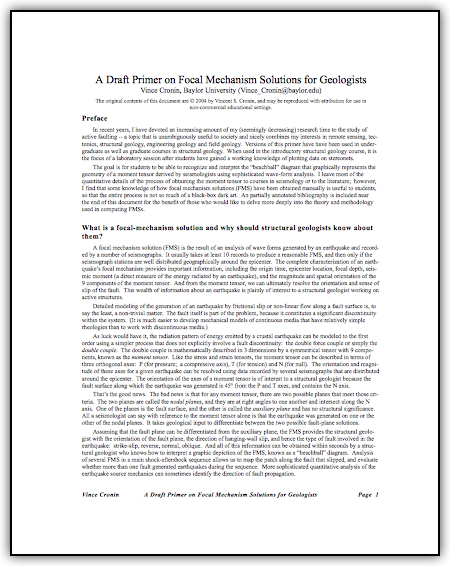 |
 |
 |
 | Aki & Richards Definition of
Strike, Dip, and Rake
(adapted from page 106 of Aki & Richards (1980), Quantitative Seismology - Vol 1) Strike - the fault-trace direction in decimal degrees (0 to 360, relative to North), defined so that the fault dips to the right side of the trace. That is, the fault always dips to the right when moving along the trace in the strike direction (from one point to the next). This means that the hanging-wall block is always to the right. This is important because rake (which gives the slip direction) is defined as the movement of the hanging wall relative to the footwall. For a vertical, strike slip fault (for which “hanging wall” has no physical meaning) we still call the right-side block the hanging wall to distinguish between right lateral and left lateral motion.
Dip - the angle of the fault in decimal degrees (0 to 90, relative to horizontal).
Rake - the direction the hanging wall moves during rupture, measured relative to the fault strike (between -180 and 180 decimal degrees). Rake=0 means the hanging wall, or the right side of a vertical fault, moved in the strike direction (left lateral motion); Rake = +/-180 means the hanging wall moved in the opposite direction (right lateral motion). Rake>0 means the hanging wall moved up (thrust or reverse fault). Rake<0 means the hanging wall moved down (normal fault).
Basic Examples:
• Dip=90 & Rake=0 -----> left lateral strike slip
• Dip=90 & Rake=180 -----> right lateral strike slip
• Dip=45 & Rake=90 -----> reverse fault
• Dip=45 & Rake=-90 -----> normal fault
|
 |
